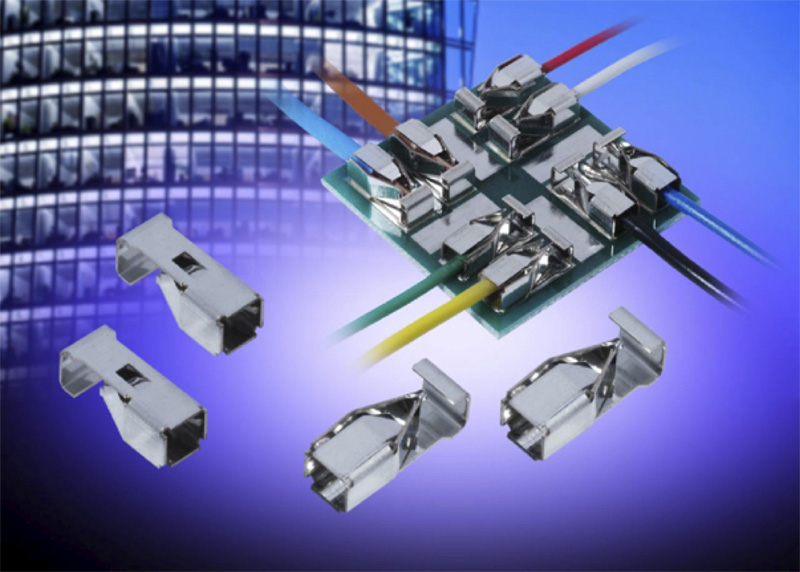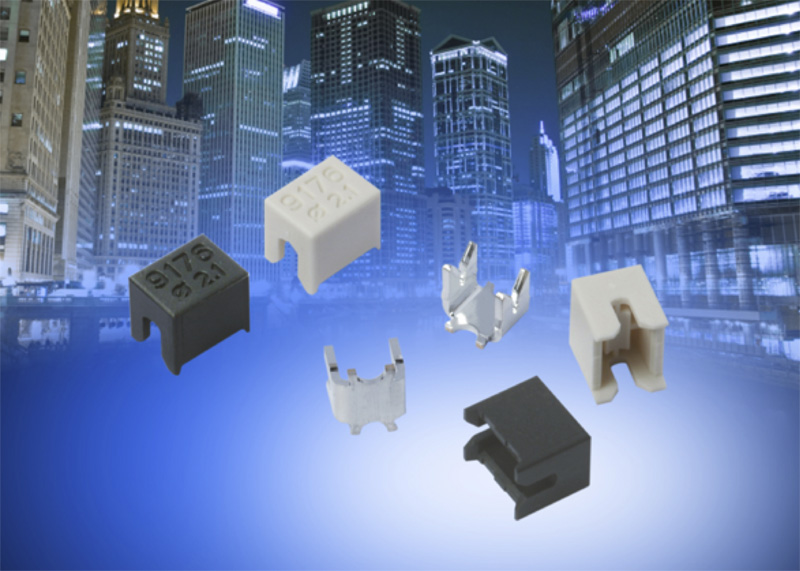Author:
Tom Anderson, Connector Product Manager, AVX
Date
10/10/2013
Now that the color, quality, and cost issues often associated with early solid-state lighting technologies have been addressed and overcome by so many leading manufacturers, consumers are adopting it at an ever-increasing rate. As a result, the market for SSL luminaries has expanded dramatically in recent years. Designing SSL luminaries poses several challenges for engineers and, throughout the industry, a great deal of effort has been put into solving challenges such as: selecting the right LED, integrating the best optical solution, choosing the best driver, and maximizing thermal management. However, connector selection, another significant design challenge, is often and mistakenly taken for granted. Considerations for Connector Selection Cost and size have been the driving factors behind connector selection in most SSL luminaire designs. However, although these factors are important and do affect the ultimate success of end products, there are several other factors that engineers should consider prior to specification. Operating at elevated temperatures in harsh environments requires careful connector selection if the design is intended to last. Consequently, engineers need to dig deeper into the design and construction of connector options, considering each connector's contact material, contact plating, plastic selection, and ease of use during assembly and disassembly. A few of the questions design engineers should consider when specifying connectors for SSL luminaries include: Which connectors have the best materials for high-reliability performance and a long useful lifespan? Which connectors provide the desired mechanical stability and meet the current requirements of the device? Would a small, sleek connector or a large, robust one better suit the design? And, of course, does the connector solution meet the customer's cost targets? Such questions are critical when designing SSL luminaires, as each unique design can necessitate the prioritization of different parameters. COTS Connector Solutions for SSL Applications SSL luminaires demand high-performance, high-reliability connectors capable of supporting the efficiency and long lifespan of these devices. An abundance of commercial off-the-shelf (COTS) connectors that meet these two requirements are available across a broad range of price points. However, many (if not most) of these existing connector solutions are not ideal for use in SSL designs. Although a host of COTS high-reliability connectors may be adequately durable and resistant to heat, the fact that they weren't developed with the specific needs of the SSL industry in mind typically results in their only meeting a portion of the specifications desired in today's continuously evolving lighting designs. As such, specifying COTS connectors that were developed years ago for either a different market, or even an earlier iteration of this one, often requires design engineers to make concessions regarding mechanical or electrical performance, size, and/or cost. For example, if an SSL design requires a high-reliability wire-to-board (WTB) connector capable of handling high current (up to 10A), compatible with automatic placement, and able to withstand the harsh environment of an SSL luminaire, a surface-mount insulation displacement connector (IDC) like AVX's 9176 Series IDC would suffice. Providing a high-reliability, gas-tight, WTB termination that is resistant to automotive levels of temperature, shock, and vibration, the 9176 SMT IDC would meet the current, placement, environmental, and reliability requirements of the design but, having initially been developed for harsh automotive and industrial applications, would not be the most size- or cost-effective solution possible. Consequently, as consumer adoption of solid-state lighting continues to expand and LED technology continues to advance, SSL design engineers are beginning to turn to the connector industry with increasing frequency in search of specialized solutions. Specialized Connector Solutions for SSL Applications In response, a number of components manufacturers have begun to develop connectors that are not only specifically designed to provide engineers with performance specs tailored to the unique environmental and reliability demands of SSL applications but that also, through critical materials selections or design configurations, attempt to satisfy the cost vs. performance outcome that is such a critical concern for SSL engineers. Achieving the ideal combination of these parameters isn't easy, though, especially for components manufacturers that remain focused on designing traditional connector solutions. Utilizing input from myriad SSL engineers seeking COTS solutions for what initially appeared to be custom applications, a team of innovative design engineers at a leading global interconnect manufacturer closely examined the broader SSL market and was able to identify several common requirements among the disparate requests. In general, SSL designers require smaller, more cost-effective connectors that are just as capable of handling high current, as compatible with automatic placement, and as easy to assemble and disassemble as standard connectors - a discovery that has enabled the interconnect engineering team to develop more than 25 unique new COTS connectors designed specifically for SSL applications since the beginning of the LED revolution. Challenge/Solution: Developing COTS Connectors for SSL Applications Although the performance and cost requirements for SSL connectors are fairly standard across all applications, the various types of connections necessitated by certain designs require an equally varied assortment of connector architectures capable of fulfilling said requirements. For example, one of the primary interconnect challenges in linear LED strip lighting is coplanar board-to-board connection, which is typically achieved using hard soldering or connectors. Hard soldering the boards together tends to meet the cost model in low labor rate markets, but is a manual - and therefore time-consuming and inconsistent - process that doesn't allow for quick and easy PCB disconnection. As such, SSL designers typically prefer to use connectors, which enable quick and easy PCB assembly and disassembly. However, due to the size and budget constraints typical of most SSL applications, existing connectors are often too big for and/or fail to meet the cost targets of SSL designs. Similarly, SSL applications utilizing wire-to-board connections often require different connector architectures than board-to-board solutions and must not only meet the general cost and performance specifications for SSL applications, but must also be made available in several iterations compatible with a range of standard AWG wire sizes. Faced with the challenge of designing unique new SSL connector solutions for these very applications, that same inventive design team broke the problem down to its most basic elements. Knowing that the critical functionality of a connector is concentrated in its contact, the team pushed itself to think well beyond the boundaries of existing solutions and status-quo connectors and challenged itself to create a single contact solution that functions just like a connector during the mating, un-mating, and wire termination processes. As a result, the team successfully developed several stripped down, insulator-less connector solutions capable of providing SSL designers with all of the critical functionality of a connector, but without the cost of the insulator and assembly, effectively satisfying the SSL industry's performance and cost targets. For the linear LED strip lighting application, the team developed an innovative, insulator-less coplanar contact system (see Figure 1) that allows LEDs to be placed in the center of the PCB, effectively minimizing LED pitch densities and maximizing light output, and contacts to be individually placed on the outer edges of the metal core or FR4 boards, effectively utilizing what is typically free space. Designed with a compression beam on the horizontal plane to absorb maximum X- and Y-axis assembly tolerances (1mm on each axis), compensate for placement errors, and optimize final lateral PCB alignment, the novel contact system also has a minimal 1.2mm Z-axis height, which enables it to be placed close to LEDs without impacting light output. Featuring gold-plated phosphor bronze socket contact and gold plug contact with tin tails, the 70-9159 contact system provides maximum contact and signal integrity both in the harsh environment and over the long lifetime of the LED fixture. It also meets the required 5A, 125°C, and automatic placement performance specifications and is capable of supporting both board-to-board and wire-to-board applications.

For the wire-to-board application, the team was challenged to develop a connector solution capable of supporting the high power (up to 20A) and ground requirements of up to a 12AWG solid or stranded wire while still satisfying all of the general SSL connector requirements with regards to size, cost, power, placement, and ease of assembly and disassembly. In response, the team created a unique surface-mount, closed-box contact system (see Figure 2) that provides simple, reliable poke home wire insertion and maximum wire retention with dual opposing high spring-force contact beams. In order to function like a connector, the box was designed with top and bottom contact tines that guide a stripped wire into the center of the contact zone and an integral end-stop to ensure proper insertion depth. There, the dual contacts mechanically hold and make constant electrical contact with the wires. In addition to facilitating wire guidance and high force retention, the novel, single-position, 9296 closed-box contact also features an enhanced solder pad for maximum mechanical stability on the PCB, enables easy twist-out wire removal, and is packaged on tape and reel for automated SMT placement. Effectively providing all of the benefits of a full-function connector in an insulator-free solution, mitigating both labor and materials costs, as well as contributing to smaller and more cost-effective SSL designs, the 9296 SSL contact solution currently accepts 12-20AWG; a smaller 18-24AWG option is under development.

The team also developed a smaller and more cost effective single-contact iteration of its high-reliability, gas-tight, wire-to-board 9176 surface-mount insulation displacement connector (see Figure 3). Despite its stripped-down appearance, the 9176 contact makes no concessions with regards to mechanical or electrical performance; it is capable of handling high current (up to 10A), compatible with automatic placement, and able to withstand the harsh environment and match the extended lifetime of an SSL luminaire. Developed for SMT termination to the PCB, the singular SSL contact provides robust PCB attachment, supports 18-28AWG, and fulfills all of the standard SSL connector requirements. Conclusion Cost and size have long been and will continue to be driving factors behind connector selection in most SSL luminaire designs. However, there are several other factors that engineers should consider prior to specification, including: contact material, contact plating, plastic selection, and ease of use during assembly and disassembly, all of which are critical for high-reliability performance, mechanical stability, and a long useful lifespan. As consumer adoption of solid-state lighting continues to expand and the technology continues to advance, SSL design engineers will continue to turn to the connector industry in search of specialized solutions. In general, SSL designers require smaller, more cost-effective connectors that are just as capable of handling high current, as compatible with automatic placement, and as easy to assemble and disassemble as standard COTS connectors. However, these common denominators, while helpful for interconnect engineers, will never extinguish the need for the continuous development of innovative new contact solutions that both expand the industry's perception of connectors and provide SSL design engineers with ideal solutions for their cutting-edge designs. AVX